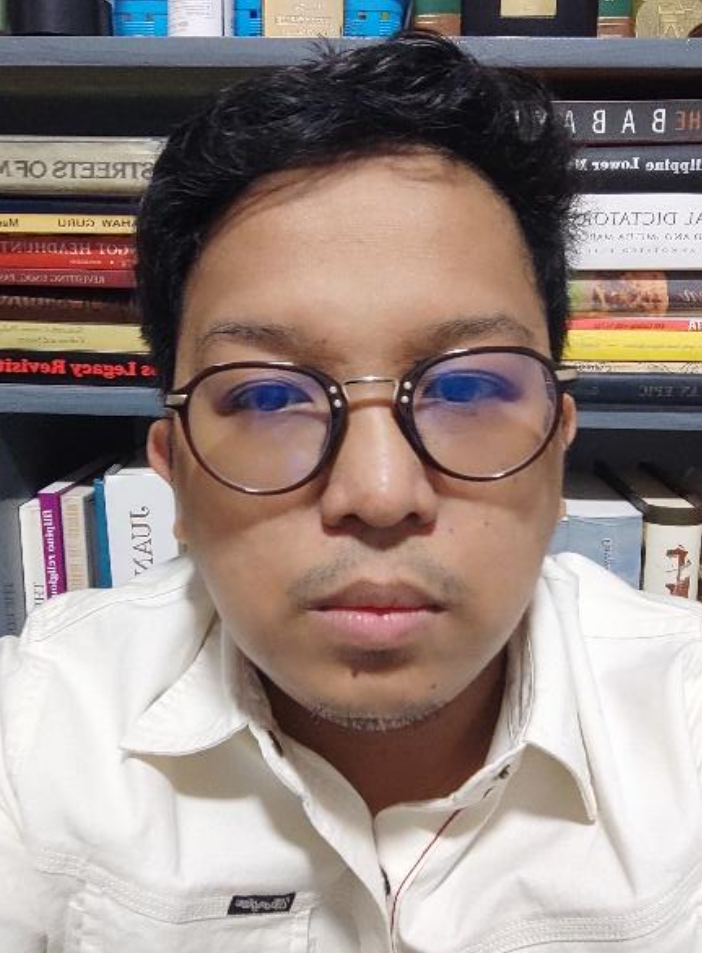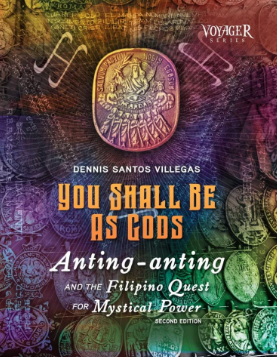
Kadi Serafica lives in Isabela, Philippines. He has been fascinated by Pinoy myths and folklore as far as he can remember. He has a collection of Filipiana books on history, religion, and the supernatural. He writes fantasy and horror that celebrates Pinoy culture, and authored The Awakening which was published by Paperkat Books. The Awakening, available in select Fully Booked Stores and Lazada, is the first of a planned eight volumes of interconnected short stories that explore a modern world where all myths and folklore are real. His next book, Days of the Elder Gods, comes out in 2025.
Welcome to Philippine Genre Stories, Kadi! What made you decide to answer the call for submission?
A couple of months ago, I saw a PGS post and read the featured story. Dug and found more so I read those as well. There was this one story that struck me because of its prose. It was eye opening. I remember reading the story three times to try and grasp the author’s style and how the author did it. Later that week I decided I will try to submit a story. But first I wanted to elevate my own style. Took me a long time but it’s worth it.
That’s wonderful to know! And which story was that?
The story was ‘Honest Reviews’ by Christine V. Lao. I love how raw it was. I think we’ve all been there. Scrolling down social media pages to read and get lost in the comments and quarrels.
True, true. And how did you start exploring writing genre stories? Were there genre books or writers that have inspired you?
Back in college, I was introduced to a pen and paper RPG called Vampire the Masquerade, it’s like Dungeons & Dragons but the players are vampires in a grim version of the modern world.
A friend of mine suggested we make a Pinoy version of the game as a joke. I suggested, ‘we can use aswangs’. We spent the night joking about it and even named the pseudo-game, “Aswang: Kagat ng Dilim” for laughs. But the idea stayed with me. A year later I was deep in development of said game that now includes as many Pinoy mythical monsters as I can find. Read a lot of Maximo Ramos.
I realized I need to make Non Playable Characters (NPC) like famous characters in their world that players can interact with. But then, those characters can’t be plain names, they need background and stories. So I started writing stories. I never finished the game but I never stopped writing stories. I didn’t know back then that I was building the foundation for the setting, its magic system. Most stories I write are within the universe. I named it, “Alamat, a History of the Awakened”
And what specifically inspired you to write SANTISIMA NEGRA?
I wanted to explore Filipino family dynamics and how they connect to politics and everyday life. I also wanted to check-in on the Santisima Negra and the Aswang clan who inherited it. Their beginnings were told in a stand-alone story, set in pre-colonial Philippines, in my second book, Days of the Elder Gods. I put these two together and got Santisima Negra.
What was easy and what was challenging when it came to writing this story?
I know the magic system in and out so the aswang part was easy. I found balancing Tagalog with English in dialogues to be the hardest. I wanted them to sound authentic and I believe using Taglish or inserting Tagalog additive words in conversations makes the characters more regular Pinoy but not necessarily conyo.
You had said in the course of the revision process of your story that you learned a lot. Would you mind sharing what were these things that you learned?
My biggest takeaway would be avoiding clichés. I like using them because they are convenient and get ideas across. But I realized that they hamper my prose-style. They were also produced under Western lens and give a western shade to my story, a step back from what I am trying to do.
Speaking of lens: among Filipino-authored works, which ones that you’ve recently read have influenced you the most and why?
My most recent reads are for research on upcoming stories or ideas I’m developing. ‘Pugot’ by Narciso Tan and ‘You Shall be as Gods’ by the late Dennis Santos Villegas.

Although I write stories about the supernatural and feature obscure rituals, I want to get them right. Understanding the culture of antingeros will help me craft better stories and showcase some of their beliefs the way they see them. Knowing why and how ancient Pinoys behead their enemies will help me show why they do it in a fair manner. The aim has always been to promote Pinoy culture. Telling our stories from our point of view is the way I know how.
Thank you for sharing these books that we’ll add! You already published a book: based on your experience, what were the highlights and lowlights of putting a book together to get it published?
Kath Estaquio-Derla of Paperkat Books, my publisher told me: Writing the book is the easy part. She was right. Turning that messy manuscript into a physical book was beyond my expectations. As a young author from a far-off province with no laurels to my name, marketing the book felt impossible.
There are so many great books out there. Most Filipino readers prefer foreign books. Convincing strangers that your stories are worth their time and money is a different beast. That is why I keep writing. So I can keep on improving. I treat this as my second job with myself as my own boss so I can’t lie to myself and make excuses when I’m tired from my day job or not feeling ‘it’. I want to make sure that when I convince those strangers that my stories are worth their time, it will be.
And other than what you’ve shared in your bio, what is that one thing that you would like people to know about you?
Sometimes I try to get into the shoes of the characters in order to get to know them. For example, in my book The Awakening, the protagonists own a shop in Quiapo where they sell anting antings and potions. Jessica Navarro, a teenager, puts them in colorful beads and bedazzles them. To promote my book, I include an ‘anting anting’ for every purchase of the book when it launched. I made those anting antings the way I imagined Jess would. People love them so I plan on keeping that tradition and may learn more about Jess and her style as she grows older.
Thank you so much again, Kadi, and we look forward to reading what happens next in Santisima Negra!
Part two is called ‘Caballero’ and will be in my third book, ‘Modern Legends, Ancient Secrets’.
Huzzah!
